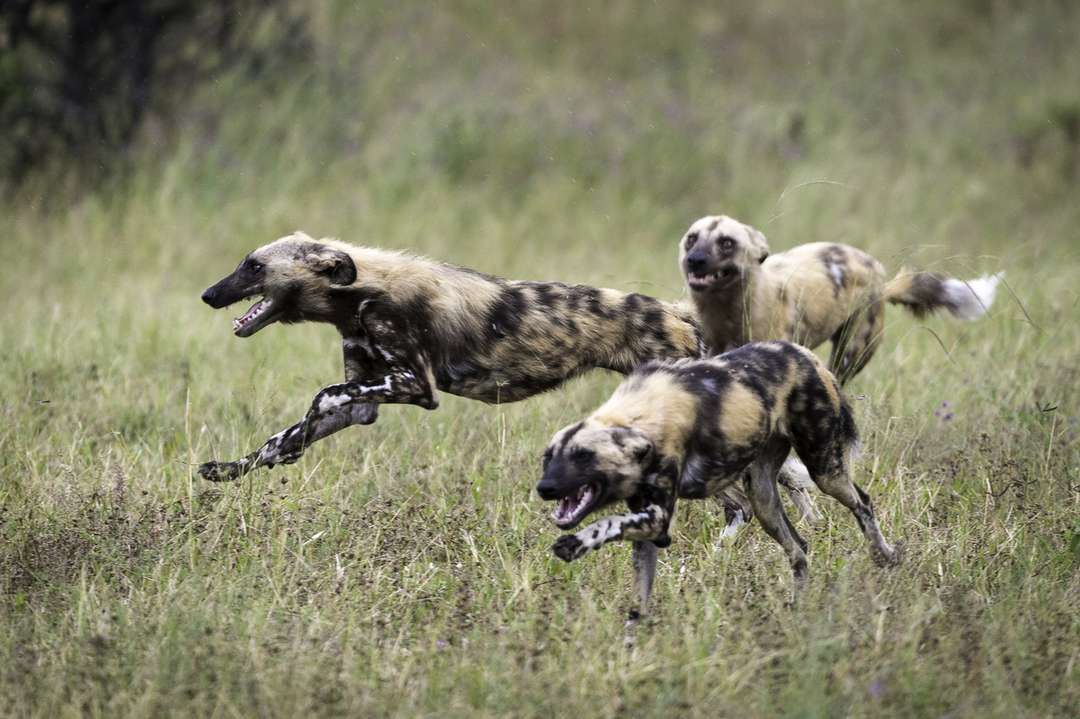The Linyanti Wildlife Reserve is part of the Kavango-Zambezi Transfrontier Conservation Area (KAZA-TFCA), which covers 500 000 km2 and five countries. It is imperative to protect large, connected natural areas like this, especially for species such as African wild dog – amongst Africa's most endangered large carnivores, with only about 6 000 individuals remaining. The African wild dog exemplifies species characterised by the need for vast undisturbed areas to support viable, self‐sustaining populations. One major threat to their survival is the loss and fragmentation of suitable habitats and resultant conflict with humans.

Consequently, wild dogs are now forced to live in isolated and small sub-populations, which are particularly vulnerable to extinction. The identification and conservation of key dispersal corridors that connect these wild dog sub-populations has thus become vital. As a result, the African Wild Dog Dispersal Study was initiated – a collaboration between the University of Zurich and the Botswana Predator Conservation Trust, and supported by the Botswana Department of Wildlife and National Parks. The Wilderness Wildlife Trust has also donated funds. The aim is a better understanding of the movement behaviour of dispersing wild dogs, and identifying their dispersal corridors. Through emigration and immigration, dispersing individuals lead to the formation of new groups, rescue small sub-populations by aiding gene flow, and can recolonise unoccupied areas.
Between 2016 and 2019, GPS satellite collars were deployed in northern Botswana on sub-adult African wild dogs that disperse from their natal pack, in order to collect information on their movement patterns, habitat use, survival, settlement success in a new area, and reproductive success of newly formed packs. In time, this new information will bolster existing data on resident wild dog packs to create a better demographic model, and will be used to inform conservation management plans of this highly endangered species. Understanding how and where wild dogs disperse, and assessing connectivity between sub-populations is thus fundamental for the management and conservation of the species across large wildlife landscapes such as the KAZA-TFCA. With this study, dispersing African wild dogs were followed across a large area of the KAZA‐TFCA, highlighting their ability to reach locations hundreds of kilometres apart within a few days, thus securing potential connectivity between distant sub-populations.

Three major dispersal corridors have been revealed: one connects the Okavango-Linyanti ecosystem in Botswana with Luengue-Luiana National Park (NP) in Angola; one runs between Chobe NP in Botswana and Zimbabwe’s Hwange NP, and one runs across completely unprotected areas, and connects Kafue NP in Zambia with more central regions of the KAZA-TFCA. Several minor routes branch off these three major corridors, including a southward connection between the Okavango-Linyanti and the Central Kalahari Game Reserve. Botswana is a key wild dog conservation and dispersal hub, and the Linyanti-Okavango region is the highest frequented corridor.

African wild dogs disperse in same-sex coalitions and can travel several hundred kilometres from natal ranges. Mortality during dispersal is thought to be high; over 90% of mortality events amongst collared dispersing wild dogs were human-caused, suggesting that human activity represents a significant limiting factor on African wild dog dispersal success. The study has also highlighted that a more holistic approach is needed to incentivise protection of wild dog outside protected areas, and that more intensive field work is needed to establish exact regional population densities.
As part of Wilderness Safaris’ Guest Science initiatives, and in support of this project, visitors to the Linyanti Wildlife Reserve are also encouraged to report all wild dog sightings. The required data is as follows: number of adults, pups, collared individuals, date and location (co-ordinates or a rough description). Side pictures are of particular value as they allow the identification of single dogs based on their unique coat patterns. We are still a long way from obtaining the desired information from sightings, so these contributions will be much appreciated.
Email: wilddogdispersal@gmail.com
WhatsApp: +41 77 4352783





Let’s plan your next journey
Ready?
When we say we’re there every step of the way, we mean it, literally. From planning the perfect circuit, to private inter-camp transfers on Wilderness Air, and easing you through Customs. We’re with you on the ground, at your side, 24-7, from start to finish. Ready to take the road less travelled? Contact our Travel Designers to plan an unforgettable journey.